Results 5,941 to 5,950 of 12096
Thread: Anandtech News
-
04-26-16, 10:53 AM #5941
Anandtech: Intel Proposes to Use USB Type-C Digital Audio Technology
USB Type-C has a number of chances to become the standard for data and charging connector for smartphones and tablets running either Android or Windows. However, in the long-term future, Intel wants USB-C to be even more universal (and therefore pervasive) than it is going to be, which is why at IDF Shenzhen part of one of the talks evolved around using Type-C for audio.
Audio receptacles on PCs and mobile equipment are virtually the last remaining analog interfaces of modern devices, requiring certain techniques to maintain a high audio quality and remove interference. Intel proposes to replace things like 3.5 mm mini-jack with USB Type-C which will help to add features to headsets and will simplify connections of multi-channel audio equipment to various gadgets. This is not the first time a company has proposed to replace analog audio on PCs and mobile devices, but so far, nobody has succeeded due to the ubiquity of 3.5mm. Since the industry may still not be ready to go all-digital, there seems to be a backup plan.
Various types of audio jacks to connect headphones to audio equipment have been around for decades. For example, the original 6.35 mm connector, which is still widely used by audio equipment, was invented in 1878. Meanwhile, two-conductor miniature 3.5 mm audio connector (which is the most widely used audio connector at present) has been around since 1960s. Headphone jacks have evolved; they have gained contacts to support microphones and even basic programmable capabilities to enable remote controls. However, fundamentally, the ability to listen to audio through a speaker has remained the same for over a hundred years: completely analog and barely any smart functionality. Today's smartphones are used for all sorts of different purposes and are connected to a variety of devices, which requires sophisticated interconnection technologies with high data-rates. At the same time, as phones and devices get thinner, or even to simplify some of the internal design, it gets harder to install multiple ports for various purposes. If there were to be a universal connector that does it all, including audio, Intel and some other players want USB Type-C to be that universal connector.
In fact, USB-C can be used to transfer analog audio in accordance with the specification of the connector. It all comes down as to how that audio is transmitted.
The USB-C has sideband use pins (SBU1 and SBU2) which can be used for analog audio in audio adapter accessory mode. Use of the sideband pins should not impact data transfers and other vital functionality of USB-C cables, which should make them relatively simple from the engineering point of view. In this case, the USB-C connector will just replace the 3.5 mm mini jack and may even gain some additional features, such as a thermal sensor in an earpiece could measure temperature for fitness tracking.
The concept is not completely new and we saw it years ago - back in the 2000s, Motorola used the mini-USB connector on its feature phones to enable charging, data transfers and a headset connection. The idea to use one connector for everything was not entirely bad, however, it left users without a choice of headsets. However, if the makers of devices (as well as producers of audio listening equipment) adopt USB-C, the is potential that the problem will not occur again. In the advent of digital signal transfer, this allows the headset to drive the digital-to-analog conversion, removing electronic interference from the host and potentially offering a wide array of audio results.
However, transferring analog audio using USB-C’s SBU pins is not the only thing that Intel is working on.
At present, Intel is finalizing the USB Type-C Digital Audio technology and plans to release its specification later in Q2. The company does not reveal a lot about the standard right now, but notes that it is working on updating the USB Audio Device Class 2.0 specifications to support new connector, expand the list of recent audio specifications and features, improve power management and simplify the discovery and configuration model to make the upcoming headsets as easy to use as today’s headsets.
In fact, one of the important issues with streaming audio over USB is the synchronization of data streams from the host to the receiver. The USB Audio Device Class specification solved the problem in the past and because Intel mentioned the USB Audio Device Class 2.0 in its presentation at IDF, this may mean that the new the USB-C Digital Audio spec will rely on this synchronization mechanism as well. Intel wants its USB-S Digital Audio to be backward-compatible with USB Audio (1.0 and 2.0), but naturally plans to add support for new music formats.
Usage of digital audio means that headsets should gain their own amplifiers, DACs and various other logic, which is currently located inside smartphones. Intel proposes to install special multi-function processing units (MPUs), which will perform beam forming, noise suppression, acoustic echo suppression (AES), acoustic echo cancellation (AEC), non-linear processing and other operations. The MPUs will also support HDCP technology, hence, it will not be possible to make digital copies of records using USB-C digital headset outputs. It is unlikely that audio processing will be offloaded to external headsets completely, but the latter will clearly gain their own chips. This may, however, see a spike in cost, especially at the super-low end.
A good thing about USB Type-C headsets with MPUs is that they are going to be software upgradeable and could gain functionality over their lifespan. Intel admits that such MPUs will make digital headsets more expensive compared to analog devices, but high volumes and new process technologies will help to reduce the cost of digital headsets over time. In fact, USB Audio headsets and audio chips for them are not something completely new. For example, Plantronics Audio 655 DSP headset costs $49.99, whereas CMedia’s HS-100 chip for headsets is available $1. Therefore, from the cost perspective, digital headphones should not be too much more expensive in general. Meanwhile, Intel wants USB-C digital audio headsets to offer “significant value at higher end” and have improved functionality in a bid to become popular among consumers.
The industry has successfully replaced analog cables with HDMI for video equipment in the living room and in the coming years will retire the D-Sub interconnection for computer displays. However, audio jacks have survived multiple generations as other standards have changed. In fact, Intel itself eliminated analog audio jacks in its first-generation NUCs PCs, but had to return them in subsequent generations. With USB-C Digital Audio Intel may not be alone. Google’s Android 5.0 already supports USB DAC devices and thus digital headsets. Moreover, last week LeEco released several smartphones without audio jacks, so, there are attempts to eliminate them from mobile devices already. One maker will not make any difference, but a coordinated move by market leaders, such as Samsung, LG or HTC, could have a significant impact.
Gallery: Intel Proposes to Use USB Type-C Cables to Connect Headsets to Mobile Devices





More...
-
04-26-16, 05:40 PM #5942
Anandtech: Apple Announces Q2 Fiscal Year 2016 Results: iPhone Sales Slowed But Servi
This afternoon, Apple released their Q2 earnings for fiscal year 2016, which ended on March 26. The company saw revenues decline for the first time since Q1 2003, according to CNN. The results today did not meet expectations, but that was quite a run to go over 13 years without a year-over-year decline in revenue. Revenue for the quarter was $50.56 billion, which is 10% lower than the $58.01 billion announced a year ago. Gross margin was $19.9 billion, or 39.4%, which was down from the 40.8% gross margin in Q2 2015. Net income was down 22.5% as well, coming in at $10.5 billion for the quarter. This resulted in earnings per share of $1.90, down from $2.33 a year ago.
iPhone sales have certainly slowed, but Apple was almost destined to falter after reporting such strong quarters a year ago. The launch of the larger iPhone 6 and 6 Plus triggered year-over-year growth in iPhone sales of 40% a year ago, and 46% growth the quarter before that. Strong growth in China helped fuel a lot of that gain, since it was practically an untapped market for Apple, but revenue from China fell 26% from a year ago. With Apple being a company that has struggled to expand it’s market outside of iPhone, when the one segment falters it can make a big impact on the results, which is exactly what happened here.Apple Q2 2016 Financial Results (GAAP) Q2'2016 Q1'2015 Q2'2015 Revenue (in Billions USD) $50.557 $75.872 $58.010 Gross Margin (in Billions USD) $19.921 $30.423 $23.656 Operating Income (in Billions USD) $13.987 $24.171 $18.278 Net Income (in Billions USD) $10.516 $18.361 $13.569 Margins 39.4% 40.1% 40.8% Earnings per Share (in USD) $1.90 $3.30 $2.33
Pretty much every earnings report, sales of the iPhone dominate the discussion, and today is not really any different. Apple sold 51.2 million iPhones this quarter, which is a drop of 16% year-over-year. That brought in revenue of $32.86 billion for the quarter, which is a drop of 18% year-over-year. A larger revenue drop than unit sales means that of the iPhones it is selling, the average selling price is also down. Apple still gets 65% of its revenue from the iPhone, even on a down quarter, but the other segments are not pulling up the slack.
iPad sales continue their downward trajectory, with sales of 10.251 million units this quarter, which is down 19% from a year ago. Revenue for the iPad was $4.4 billion, also down 19%. This has been a common trend with the iPad over the last year or two, and what originally looked to be another strong growth segment for Apple has quickly become a market where sales keep declining. Eventually they will bottom, but even with the solid new entries in the iPad Pro, the smaller iPad Pro 9.7, and even the new iPad Mini, the Apple tablet market has quickly reached a point where people are not upgrading as quickly as the iPhone market does, and you have to start to wonder when sales of the iPad are going to bottom out.
The PC market is certainly declining, but the Mac has soldiered on, generally outperforming the PC market even in the down times. That trend also stopped this quarter, with Mac sales down 12% year-over-year, to 4.0 million devices. Revenue for the Mac was $5.1 billion, which is down 12% compared to last year, meaning that Apple is also selling lower cost Macs than a year ago. We’ve not seen Apple refresh the Mac for some time though, with only the MacBook getting Skylake, so sales may be affected by this as well.
Services, which include internet services, AppleCare, Apple Pay, and others, are now the second largest revenue source for Apple, with revenues up this quarter 20% over last year, for a total of just a hair under $6 billion for the quarter. Even compared to the holiday quarter, which was Q1, sales were pretty much flat, and all of the other segments dropped significantly (and expectedly) compared to last quarter. You likely don’t think of Apple as a services company, but iTunes sales, Apple Music, and their other services are now the number two product at Apple, and that’s pretty surprising. It may not be number two next quarter, but with Apple having over a billion people using their services now, sales here should stay strong.
The final segment from Apple is “Other Products” which includes Apple Watch, Apple TV, iPod, Beats, and accessories. This segment also grew significantly year-over-year, to $2.2 billion, which is up 30%. Although Apple doesn’t break down the products inside here, the addition of Apple Watch likely makes up a good portion of this, since it wasn’t part of the category a year ago.
Apple announced they were going to be adding an additional $50 billion to their capital return program, bringing the program up to $250 billion in cash returned to shareholders by the end of March 2018. The dividend will be increased to $0.57 per share, and they will buy back $175 billion in shares, up from the original goal of $140 billion in shares.Apple Q2 2016 Device Sales (thousands) Q2'2016 Q1'2016 Q2'2015 Seq Change Year/Year Change iPhone 51,193 74,779 61,170 -32% -16% iPad 10,251 16,122 12,623 -36% -19% Mac 4,034 5,312 4,563 -24% -12%
They also announced guidance for the next quarter, where they expect revenue between $41 and $43 billion (Q3 2015 revenue was $49.6 billion) and gross margin is expected to drop again to between 37.5 and 38%. With this guidance, next quarter may be very similar to this one.
I don't think we have to worry about Apple going bankrupt just yet, but today’s earnings are a big change in what we’ve gotten used to in the last 13 years or so. All things must come to an end, and today it was Apple’s amazing track record over the last decade or more. They are certainly not alone in having their struggles this quarter, but the drop is pretty significant nonetheless.Apple Q2 2016 Revenue by Product (billions) Q2'2016 Q1'2016 Q2'2015 Revenue for current quarter iPhone $32.857 $51.635 $40.282 65.0% iPad $4.413 $7.084 $5.428 8.7% Mac $5.107 $6.746 $5.615 10.1% iTunes/Software/Services $5.991 $6.056 $4.996 11.8% Other Products $2.189 $4.351 $1.689 4.3%
Source: Apple Investor Relations
More...
-
04-27-16, 07:21 AM #5943
Anandtech: MSI Cubi 2 Plus vPro Skylake mini-STX PC Review
The desktop PC market has been subject to many challenges over the last few years. However, the miniaturization trend (including the introduction of the ultra-compact form factor - UCFF - NUCs) has provided some bright spots. The recent introduction of the mini-STX (5x5) form factor has provided yet another option between the NUC and the mITX form factor for PC builders. The ECS LIVA One was one of the first mini-STX PCs to come to the market. MSI also introduced the Cubi 2 Plus models around the same time. The lineup consists of two models - the consumer-focused Cubi 2 Plus, and the business-focused Cubi 2 Plus vPro. Read on for our review of the two versions of the mini-PC.
More...
-
04-27-16, 04:37 PM #5944
Anandtech: SanDisk Announces Z410 Client SSD
SanDisk has introduced a new low-end drive to their line of client SSDs targeted at business and OEM customers. The Z410 is positioned closely to Z400s but is not a direct replacement. Instead, the Z410 focuses on offering just the most popular capacities for mainstream PC usage while the Z400s continues to serve other markets with mSATA and M.2 versions and capacities as small as 32GB.
First announced almost a year ago as the first 15nm TLC SSD, the Z400s sought to cut costs in order to break into new parts of the embedded and client PC markets. The Silicon Motion SM2246XT controller it uses is a DRAM-less two or four channel design that limits potential performance and capacity. The SM2246XT also lacks encryption support and LDPC error correction.
The SanDisk Z410 abandons the mSATA and M.2 form factors to focus specifically on 2.5" with capacities from 120GB to 480GB. The only significant performance difference from the Z400s is a substantial increase in sequential write speed, while sequential read speeds are rated slightly lower and random read and write specifications are similar. The Z410 does benefit from a controller upgrade that allows for LDPC error correction and SLC caching, but it seems the latter's impact on write amplification has kept the write endurance ratings from increasing substantially. The three year warranty period on the Z410 is also shorter than the five years offered for the Z400s.
The introduction of the Z410 puts SanDisk in the unusual position of having three tiers of TLC NAND-based SATA SSDs. While their consumer-oriented product line still includes the MLC-based Extreme Pro, SanDisk's business/OEM line tops out with the TLC-based X400. The X400 distinguishes itself with clearly higher performance and endurance and the availability of a 1TB capacity, but the Z400s and Z410 are close enough to cause some confusion. The Z410 will probably end up displacing the 128GB and 256GB 2.5" Z400s while the rest of the Z400s line sticks around for the less competitive niches.SanDisk OEM Client SSD Comparison Drive X400 Z410 Z400s Capacities 128GB, 256GB, 512GB, 1TB 120GB, 240GB, 480GB 32GB, 64GB, 128GB, 256GB Controller Marvell 88SS1074 ? Silicon Motion SM2246XT Sequential Read 545 MB/s 535 MB/s 546 MB/s Sequential Write 520 MB/s 445 MB/s 342 MB/s Random Read IOPS 95k 37k 37k Random Write IOPS 75k 68k 69k Form Factors 2.5", M.2 2280 2.5" 2.5", mSATA, M.2 2242, M.2 2280 Encryption TCG Opal (optional) None None Endurance 72-320 TBW 40-120TBW 20-72 TBW Warranty 5 years 3 years 5 years
More...
-
04-28-16, 07:34 AM #5945
Anandtech: A Look At QD Vision's Color IQ And The Philips 276E6 Monitor: Quantom Dots
At this year's CES Josh and I sat down with representatives of QD Vision to discuss their quantum dot display technology, along with where they see the television and monitor market moving in the next few years. QD Vision offers a quantum dot solution for displays, which is branded as Color IQ. The interesting proposition that QD Vision brings to the table with their technology is that it's not just usable in high end displays, but also in less expensive ones where it can be used to bring features that were traditionally limited to high end displays down to a lower price point.
After our meeting with QD Vision, we were informed that Philips would be launching a new line of monitors that use QD Vision's Color IQ technology. Given that these are some of the first computer monitors to come to market with quantum dot technology, I was quite interested in taking a look at it. The monitor in question is the Philips 276E6 monitor, which has a 27" panel and claims to cover 99% of the Adobe RGB color gamut. Read on for more info about Color IQ, and to find out how well the Philips 276E6 performs.
More...
-
04-28-16, 03:16 PM #5946
Anandtech: Seagate Begins Volume Shipments of Helium-Filled HDDs, Reveals Their Final
Seagate has started volume shipments of its first helium-filled hard drives. They were announced earlier this year. The new HDDs are available to all interested parties, which means that Seagate’s biggest customers have already evaluated and validated them. Volume shipments of the 8 TB and 10 TB helium-filled hard drives will help Seagate to improve its financial results and margins, since the new HDDs will be amongst the most expensive drives in the company’s lineup.
Brand New Platform
The Seagate Enterprise Capacity 3.5 helium-filled hard drive is based on the company’s brand-new hermetically-sealed platform feature fourteen heads and seven perpendicular magnetic recording (PMR) platters with up to 1.43 TB capacity each. Seagate claims that the new HDD platform is based on a special wide-weld hermetically sealed drive enclosure with a design based on a multi-step forging process. Besides, it uses a motor attached to both top and bottom covers, in order to better handle vibrations and maximize reliability. Sensors for humidity, temperature and helium pressure ensure that the helium-filled drive is always being monitored for reliable operation.
Seagate has incorporated PowerChoice and PowerBalance technologies in the new drives. PowerChoice helps datacenter operators to manage power consumption during idle time by either reducing spindle speed, or even stopping disks completely, after an admin-defined interval of idle time. Meanwhile, PowerBalance technology helps the administrators to balance the power consumption and IOPS (input/output operations per second) performance of hard drives prior to installation.
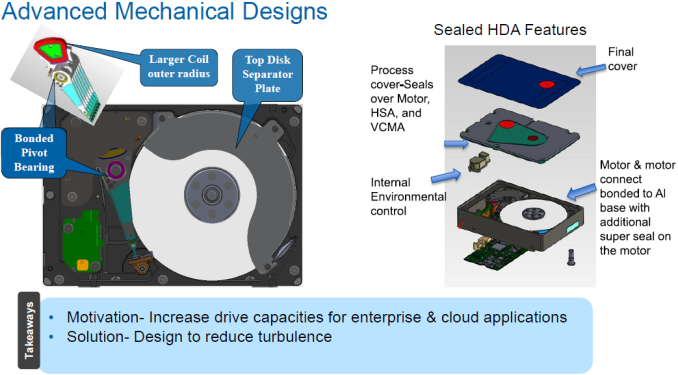
The Enterprise Capacity 3.5" helium hard drive sports a 256 MB multi-segmented cache. The platters rotate at 7200 revolutions per minute (RPM). The host interface is SATA 3.2 (6 Gbps), and supports hot-plugging.
Seagate claims that its multi-segmented cache helps the Enterprise Capacity 3.5 (Helium) HDD to improve performance compared to its predecessors and rivals and enables burst transfer rates at up to 600 MB/s (for small chunks of data, of course). The company does not reveal many details about its new caching algorithms, but 256 MB of memory is still a rather huge buffer.
Lineup and Performance Numbers
Seagate will offer multiple versions of its Enterprise Capacity 3.5" Helium HDDs HDDs, including models with 8 TB capacity, 4K and 512e sectors as well as self-encrypting (SED) options.
Seagate declares fairly high performance numbers for its Enterprise Capacity 3.5" Helium HDDs: 243 or 254 MB/s maximum sustained transfer rate as well as 4.16 ms average latency, which is higher than the numbers listed by competing drives from HGST and Western Digital.Lineup of Seagate's Enterprise Capacity 3.5" Helium HDDs with SATA Interface Standard 4KN Standard 512e Self-Encrypting 4KN (SED) Self-Encrypting 512e (SED) 10 TB Capacity ST10000NM0006 ST10000NM0016 ST10000NM0056 ST10000NM0046 8 TB Capacity ST8000NM0006 ST8000NM0016 ST8000NM0056 ST8000NM0046
Usage of helium inside a hard drive helps to reduce the drag force acting on the spinning disk stack and lower the fluid flow forces affecting the disks and the heads. As a result, HDD makers can install up to seven platters into a standard drive and also use lower-power motors and mechanics. This reduces the power consumption of the HDDs. For example, power consumption of Seagate’s 10 TB hard drive is actually lower than power consumption of the company’s 8 TB drive for nearline applications (8.5 W per drive vs. 10.4 W per drive).Comparison of Helium-Filled HDDs Seagate Enterpise Capacity
ST10000NM0006HGST Ultrastar He10
HUH721010ALE600xxxxWD Gold
WD8002FRYZCapacity 10 TB 8 TB RPM 7200 RPM Interface SATA 6 Gbps DRAM Cache 256 MB 128 MB Maximum Sustained Transfer Rate 243 MB/s
254 MB/s225 MB/s
249 MB/s205 MB/s Average Latency 4.16 ms unknown Rated Workload (Drive Writes Per Day) 0.189 unknown 0.189 Equivalent of 550 TB of Writes per Year unknown Equivalent of 550 TB of Writes per Year Acoustics Idle 28 - 30 dBA 20 - 36 dBA 20 dBA Seek 32 - 34 dBA unknown 36 dBA Power Rating Idle 4.5 W 5 W 5.10 W Random Write 6.5 W 6.8 W 7.4 W Random Read 8.5W 6.8 W 7.4 W MTBF 2.5 million hours Warranty 5 Years Price $695 at Amazon unknown $629
For cloud datacenters, power consumption of HDDs is as important as their capacity. Increasing the capacity of the top-of-the-range hard drives from 8 TB to 10 TB automatically boosts total capacity per rack by 25% (which means an increase from 1920 TB to 2400 TB per standard rack that holds 240 drives). Going helium additionally reduces the power consumption of such a rack by up to 456 W. An increase of storage capacity amid reduction of power consumption not only maximizes data storage capacities of a particular facility, but also shrinks its total cost of ownership (TCO), an important metric for companies with multiple large datacenters.
Broad Availability, But No SAS Models Yet
It should be noted that when Seagate introduced its Enterprise Capacity 3.5" 10 TB HDD in January, the company announced models with Serial ATA-6 Gb/s and SAS-12 Gb/s interfaces, which were aimed at different environments. At present, Seagate only ships models with SATA interface, meaning that customers, who need SAS, may still be evaluating the drives and will come to market later. By contrast, HGST offers different models of its 10 TB HDDs: with SATA and SAS interfaces.
While Seagate said that its 10 TB helium-filled HDDs are available from its distributors worldwide, it did not reveal their actual prices. Amazon currently sells the Seagate Enterprise Capacity 3.5" HDD 10TB (ST10000NM0016) for $695.98 (note that this is not an MSRP), which is far from affordable. Still, keep in mind that we talking about exclusive products based on a brand-new platform. Such HDDs make a lot of sense for datacenters, but, currently, not so much for desktops or NAS units.
Buy Seagate Enterprise Capacity 3.5 10TB on Amazon.com
More...
-
04-29-16, 08:10 AM #5947
Anandtech: The Corsair Carbide 400Q Case Review
Today we are having a look at one of Corsair’s latest cases, the Carbide 400Q. The 400Q is a subtle ATX case that is designed with silence in mind, employing noise-dampening measures while boasting excellent thermal performance and versatility.
More...
-
04-29-16, 07:34 PM #5948
Anandtech: Intel's Changing Future: Smartphone SoCs Broxton & SoFIA Officially Cancel
The past two weeks have been a busy – if not tumultuous – period for Intel. After announcing a new company strategy focusing on high growth markets, and company-wide layoffs to reach those goals, we have our first announcements on product changes that will come from Intel’s new strategy. In a report on Intel’s new strategy published by analyst Patrick Moorhead, Moorehead revealed that Intel would be radically changing their smartphone SoC plans, canceling their forthcoming Broxton and SoFIA products and in practice leaving the smartphone market for at least the time being.
Given the significance of this news we immediately reached out to Intel to get direct confirmation of the cancelation, and we can now confirm that Intel is indeed canceling both Broxton and SoFIA as part of their new strategy. This is arguably the biggest change in Intel’s mobile strategy since they first formed it last decade, representing a significant scaling back in their mobile SoC efforts. Intel’s struggles are well-published here, so this isn’t entirely unsurprising, but at the same time this comes relatively shortly before Broxton was set to launch.
More...
-
05-02-16, 03:50 PM #5949
Anandtech: Intel Adds Crystal Well-based Skylake-R Processors: 65W with 128MB eDRAM
Intel has added three new microprocessors for embedded and highly-integrated applications into its lineup. The new CPUs are based on the Skylake microarchitecture and feature high-performance integrated graphics cores with an added eDRAM cache called Crystal Well. The new products should offer high performance in memory bandwidth applications due to Skylake’s updated 2nd generation cache architecture.
The chips that Intel has added to its price list are the Core i7-6785R, the Core i5-6685R, and the Core i5-6585R. The new processors are designed to fit in all-in-one PCs, small form-factor and other types of highly-integrated PCs that can satisfy the 65W TDP over the mobile Crystal Well variants that run at 45W. The new desktop chips from Intel are based on the Skylake-H silicon in its most advanced configuration: with four general-purpose cores as well as the GT4e integrated graphics. Not all the specifications of the processors are known at this point, but we are talking about quad-core processors with Generation 9 Iris Pro graphics and 72 execution units (as well as 128 MB of eDRAM), a dual-channel DDR4-2133 memory controller, a PCI Express 3.0 interface and three display outputs. The power consumption of Intel’s new embedded products for desktops does not exceed 65 W, which is typical for R-series offerings, and offer a potential upgrade path by OEMs for any equivalent systems that used an equivalent Broadwell-based R-series processor.
Intel unveiled its Skylake-H silicon in its full glory earlier this year when it released its mobile Xeon E3 v5 processors with the Iris Pro Graphics P580.
Several makers of industrial computer modules (such as Congatec) already use chips like the Intel Xeon E3-1515M v5 for their products, which is why we know what they look like. The die of the Skylake-H processor looks rather long and the lion’s portion of its transistor budget was spent on the mammoth iGPU. The extra on package die is the eDRAM, and the silicon underneath the CPU is the chipset (it's the Y/U series CPUs that have integrated chipsets).
The new parts feature higher clock rates compared to the Broadwell processors, although slightly lower than their K series counterparts. The processors have a number of important architectural improvements which will affect the performance of these CPUs in real-world applications. It is interesting to note that Intel retained the full L3 cache size in its new R-series CPUs: in the Broadwell models part of the L3 was disabled, but the new Skylake parts are now in line with their i7 and i5 naming. This means that the i7-6785R has 8 MB of L3, similar to the i7-6700K, and the i5-6685R/6585R has 6 MB of L3, similar to the i5-6600K.Comparison of Intel's Embedded CPUs i7-6785R i5-6685R i5-6585R i7-5775R i5-5675R i5-5575R Microarchitecture Skylake Broadwell Cores/Threads 4 / 8 4 / 4 4 / 4 4 / 8 4 / 4 4 / 4 L2 Cache 1 MB (256 KB × 4) L3 Cache 8 MB 6 MB 6 MB 4 MB eDRAM 128 MB 128 MB CPU Frequency default 3.30 GHz 3.20 GHz 2.80 GHz 3.30 GHz 3.10 GHz 2.80 GHz maximum 3.90 GHz 3.80 GHz 3.60 GHz 3.80 GHz 3.60 GHz 3.30 GHz GPU Iris Pro 580 Iris Pro 6200 EUs 72 48 TDP 65 W 65 W GPU Frequency 350 MHz to 1150/1150/1100 MHz 300 MHz to 1150/1100/1050 MHz DRAM Support DDR4-2133/1866
DDR3L-1600/1333-
DDR3L-1866/1600/1333Packaging FCBGA1440 FCBGA1364 Process Technology 14 nm Price $370 $288 $255 $348 $265 $244
Intel’s Skylake processors feature an upgraded microarchitecture with better parallelism and improved IPC, which means better performance almost across-the-board. An important capability of Skylake is its Speed Shift technology, which can quickly increase frequency for a short amount of time in a bid to rapidly perform an operation (~1-3 microseconds rather than 30-100 without Speed Shift), thus providing better user experience and ultimately saving power. Intel’s Speed Shift requires support by the operating system and right now Microsoft’s Windows 10 can take advantage of the technology in a bid to improve its responsiveness.
Another important aspect of Intel’s Skylake CPUs with high-end iGPUs is their eDRAM, which means the processors also gain the code name 'Crystal Well'. The eDRAM for Skylake is different to that found in previous Crystal Well implementations: in the last generation, the eDRAM acted as a victim cache to the L3 cache, meaning that evicted cache lines from L3 would add up in the eDRAM and be quick for re-reading without having to access main memory. The downside to this is that data could not end up in eDRAM without being used first, giving initial data read latencies the same performance as previous processors. Ultimately this is still good for graphics and gaming, where textures are re-read from memory frequently. The new arrangement for the eDRAM in these Skylake processors has placed the eDRAM in a different part of the chain, between the System Agent and the DDR memory. This means that the eDRAM acts as a DRAM buffer, with 50 Gbps bandwidth in each direction to the LLC, but is also accessible for early reads/writes by any device that needs memory access through the system agent (i.e. anything through PCIe). Previously this was not possible, but now it means that Skylake's eDRAM implementation should offer a speedup in many more scenarios that before.
The final noteworthy improvement of the Skylake processors compared to previous-generation offerings is revamped graphics core as well as increased amount of execution units. Based on our findings last year, real-world performance of Intel's high-end Iris Pro 6200 graphics core (Broadwell’s top iGPU) is higher than that of entry-level discrete graphics cards. Meanwhile, the highest-performing GT4e graphics core of Intel Skylake contains 72 EUs, up from 48 in the case of the Broadwell. Compute performance of Intel's contemporary top-of-the-range iGPU (Iris Pro 580) is around 1.1 TFLOPS depending on its frequency, so, this one should be tangibly faster than its predecessor. Last, but not least, Skylake’s iGPU has a revamped multimedia engine, which supports hardware decoding and encoding of UHD videos using HEVC or VP9 codecs.
Intel’s new Core i7-6785R, Core i5-6685R, and Core i5-6585R are already available at a tray price of $370, $288 and $255 respectively. Partners of the chipmaker will likely use the new processors to build their new systems in the coming months.
Image Sources: Congatec, Intel's IDF presentations.
More...
-
05-02-16, 07:30 PM #5950
Anandtech: NVIDIA & Samsung Settle All Patent Infringement Disputes
Roughly a year and a half ago, NVIDIA opened up a patent infringement case against Samsung and Qualcomm, claiming that the various GPUs used by the two firms violated various NVIDIA patents. In response, Samsung opened up their own counter-suit, claiming that NVIIDA and its partners were violating Samsung patents. Since then, things have not progressed well for NVIDIA, with the US International Trade Commission (ITC) ruling that Samsung’s GPUs don’t infringe on NVIDIA’s patents, while also ruling that NVIDIA’s GPUs did infringe on Samsung’s patents.
Now with the final ruling on Samsung’s counter-suit originally scheduled for today, NVIDIA has announced that they have buried the hatchet with Samsung, ending all litigation between the companies. In their announcement, NVIDIA notes that both companies have ended their suits with the US courts, US ITC, and the US Patent office, effective immediately. In turn, both companies have agreed to cross-license “a small number of patents by each company to the other,” while noting that this is not a broad cross-licensing agreement. All other terms of the deal – such as any potential payments – are not being disclosed.
As noted by Bloomberg, NVIDIA faced a potential import ban on some of their products should they have lost the final ruling on the Samsung counter-suit, so combined with their earlier losses at the ITC, there was a clear need for NVIDIA to settle the case rather than waiting on ITC and court rulings. This, in turn, seemingly puts a wrench in NVIDIA’s overall mobile patent licensing efforts, as the Samsung case was their best opportunity to get a ruling that other mobile GPUs were violating their patents. That there is some cross-licensing going on between Samsung and NVIDIA does mean that NVIDIA holds at least some patents that Samsung believes they need, but that this is being settled quietly out of court means that it’s hard to imagine that NVIDIA has a strong position for further patent licensing efforts.
More...
Thread Information
Users Browsing this Thread
There are currently 43 users browsing this thread. (0 members and 43 guests)




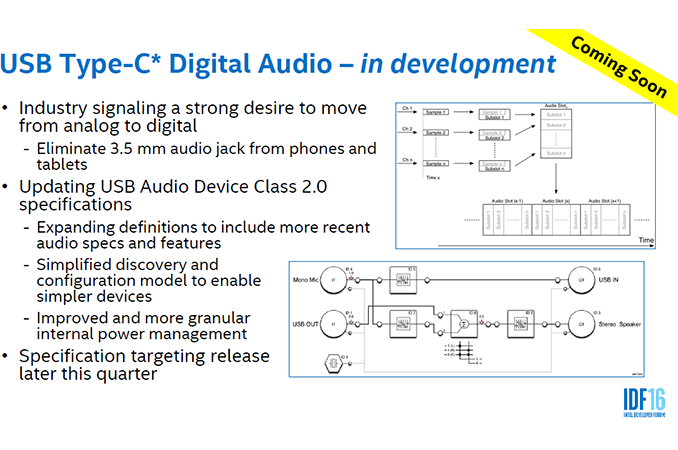
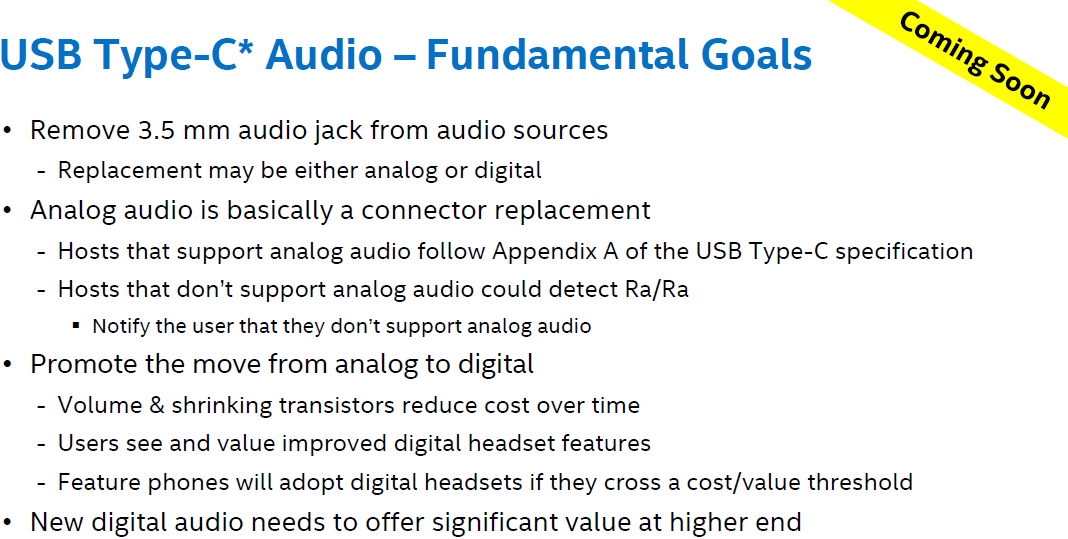



 Quote
Quote
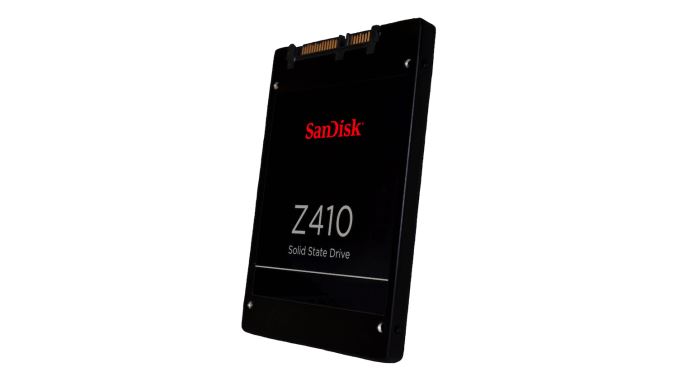
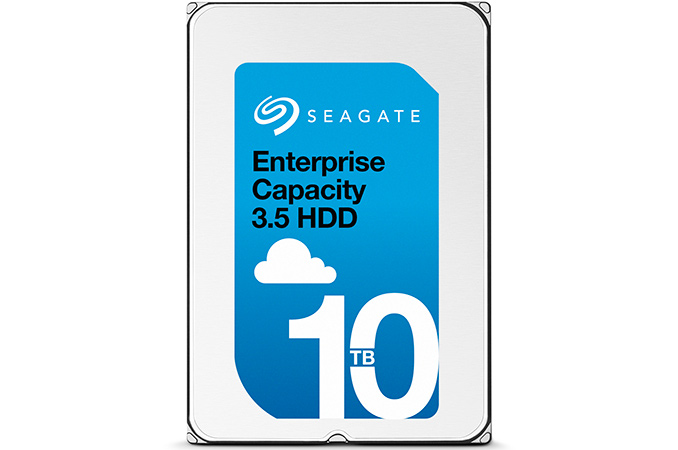
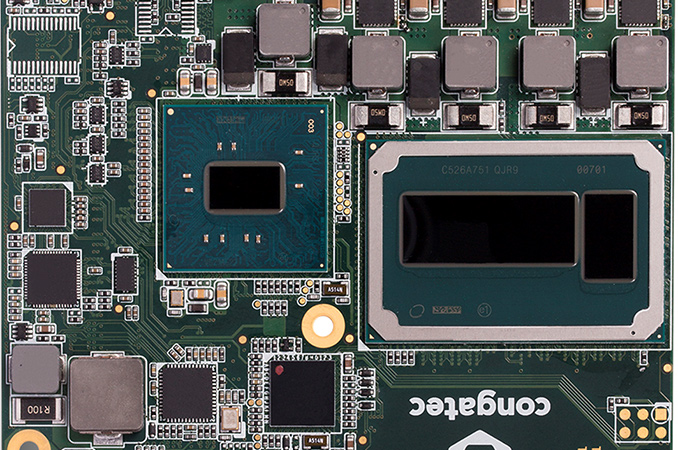
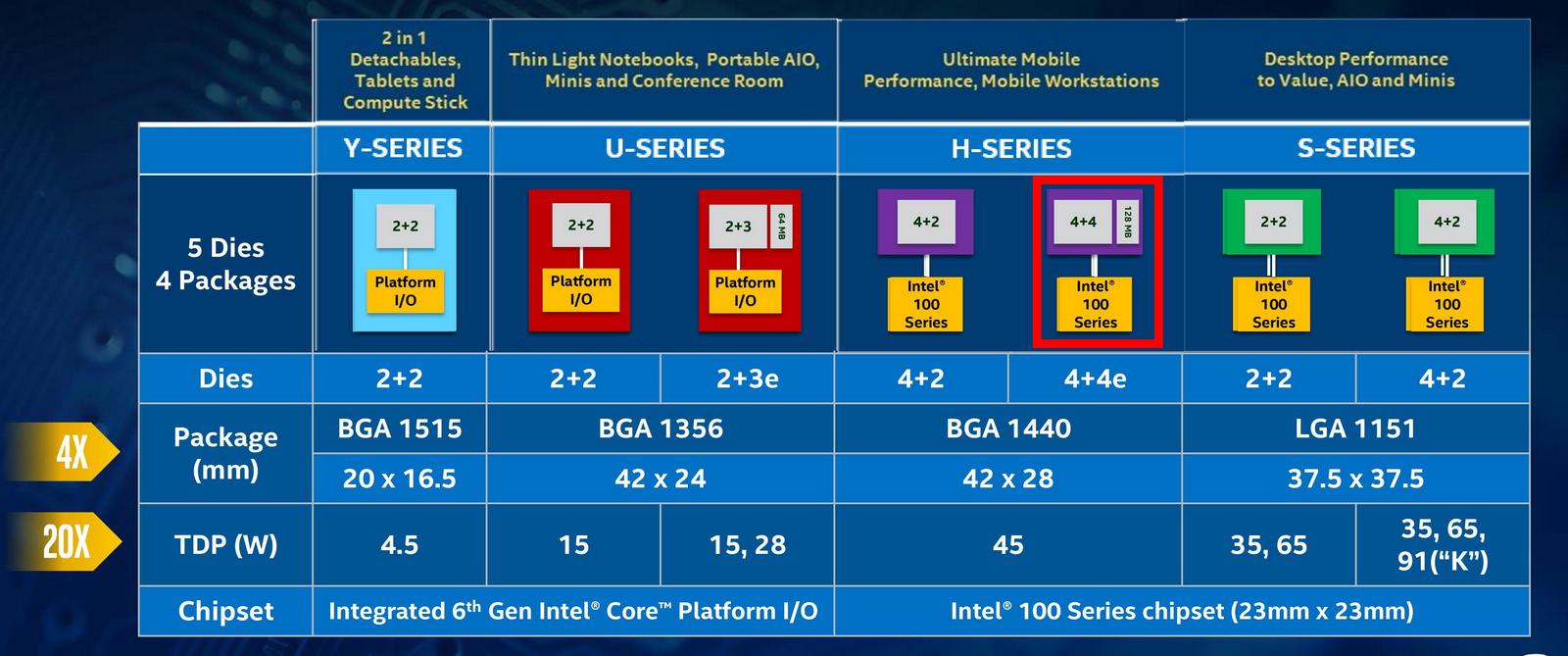
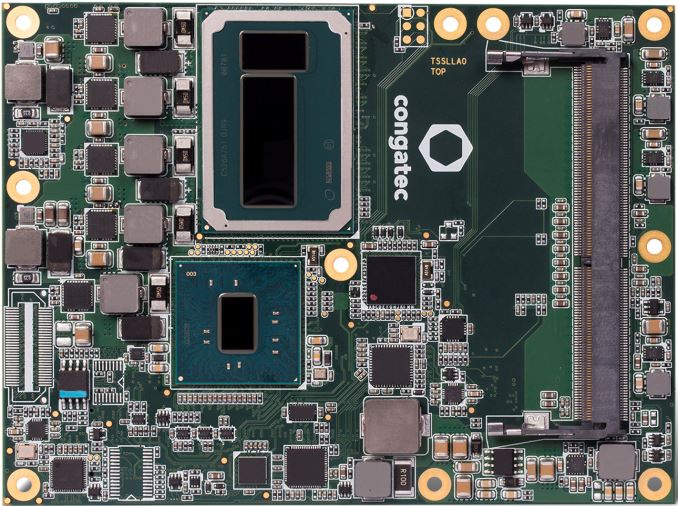

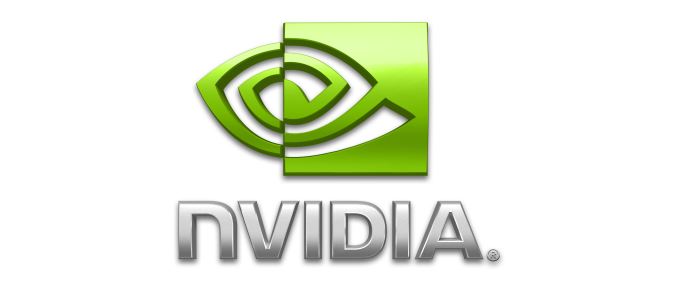
















Bookmarks